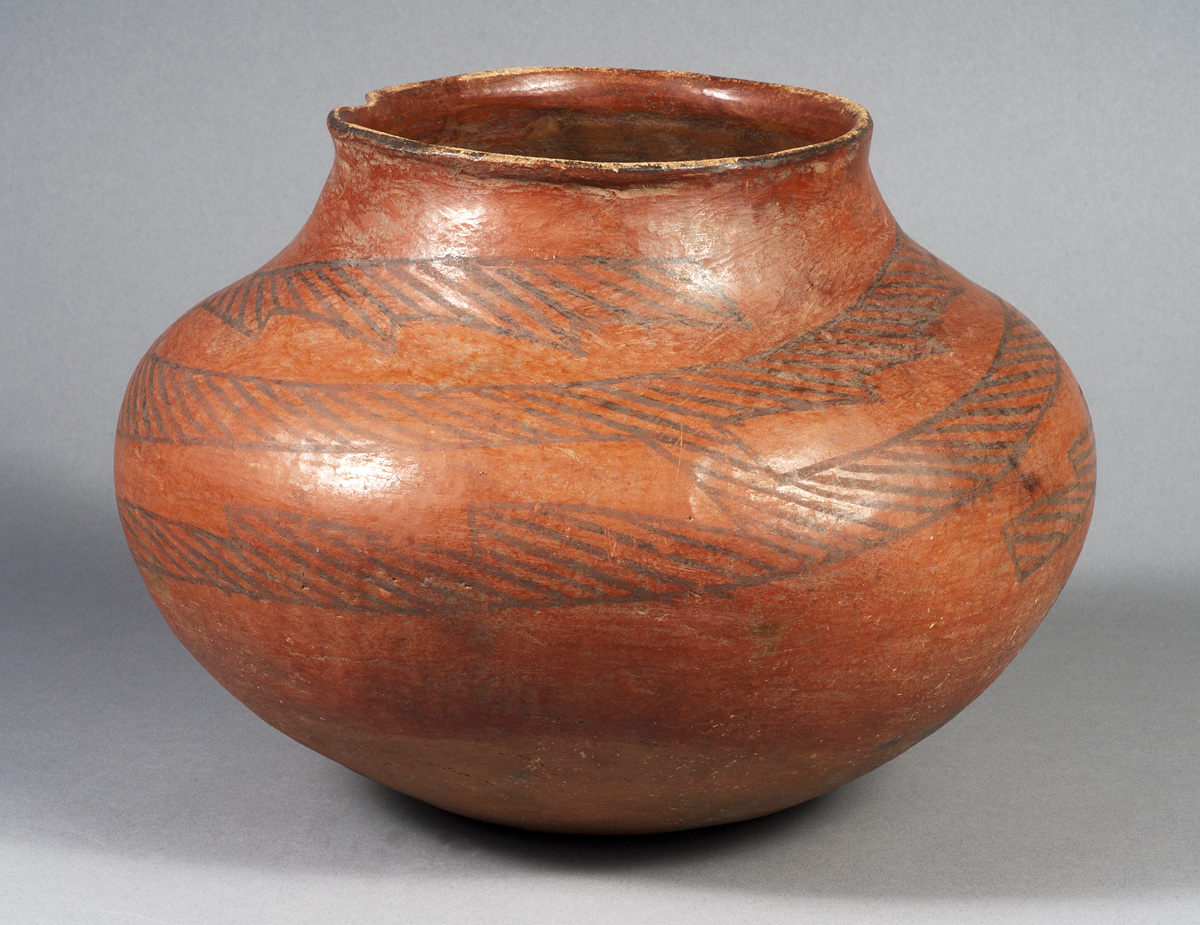Tsegi Orange Ware is one of the most distinctive pottery wares produced in the Southwest. Made in Marsh Pass and the Tsegi canyons of Navajo County, Arizona, this ware was traded widely across Arizona, Utah, and New Mexico.
Types include: Cameron Polychrome, Citadel Polychrome, Dogoszhi Polychrome (image gallery only), Kayenta Polychrome, Kiet Siel Polychrome, Medicine Black-on-red, Tsegi Black-on-orange, Tsegi Orange, Tsegi Polychrome, Tsegi Red-on-orange, Tusayan Black-on-red, and Tusayan Polychrome.
Archaeological Culture: Ancestral Puebloan
Date Range: A.D. 1050-1300.
Construction: By coiling.
Firing: In an oxidizing atmosphere.
Core Color: Dark gray to light gray, brownish through brick-red pink.
Temper: Varied amounts of quartz sand and light-colored sherd fragments, frequently conspicuous in cross-section and on worn surfaces.
Surface Color
Generally dull orange except for slipped portions; slip, maroon red; surface and core color generally do not contrast except when core is gray. Fire clouds are common.
Forms: Bowls, jars, seed-jars, dippers; bowls often have single horizontal handle; vessel base frequently depressed.
Decoration:
- Paint: Black, white, and red.
- Pigment: Manganese, kaolin, and hematite.
- Design: Confined to interior bowl surfaces; red band or red stripe encircles the exterior of bowls or exterior has red slip; white paint as outliner for black design; rims, frequently have a solid painted line. Designs are geometric. Hatchured panels, series parallel lines, narrow lines, horizontal and diagonal hachure in rectangular, circular, stepped, or triangular panels; staggered lines, vertical lines with staggered squares between; black striped, solid stepped elements.
Other Names: Plain Yellow Ware.
Comparison: The distinction between San Juan Red Ware and Tsegi Orange Ware is based on three characteristics: Clay, temper and use of slip. San Juan Red Ware rarely has a slip and has sand or crushed rock temper. The clay frequently fires red or brown. Tsegi Orange Ware may have a slip, has sherd or white angular fragments in its temper, and the clay fires orange.
Compiled from the following sources:
Colton, Harold S. (1956) Pottery Types of the Southwest. Museum of Northern Arizona Ceramic Series No. 3. Flagstaff, Arizona
Compiled by:
April Peters, Northern Arizona University Anthropology Laboratories.

